Three-Dimensional Physical Test Study on the Overburden Breaking Behavior of Non-Penetrating Pre-Splitting in Small-Coal-Pillar Roadway Roofs
Abstract
:1. Introduction
2. Three-Dimensional Physical Simulation Test Parameter Design and Test Scheme
2.1. Design of Physical Simulation Test Parameters
2.2. The Physical Simulation Test Scheme
- (1)
- Three multi-point displacement measuring stations were arranged in areas I, II, and III, respectively, and three internal displacement measuring points were set up in each measuring station. The interior displacement measurement points of the first layer were located 94.1 mm away from the coal seam roof in the main roof rock layer and were numbered W1-1 to W1-3. The measured internal displacement points of the second layer were 266.9 mm away from the coal seam roof and were numbered W2-1 to W2-3. The measurement points for the internal displacement in the third layer were 408.2 mm away from the coal seam roof and were numbered W3-1 to W3-3. The displacement of the strata within the model was monitored, and the effect of roof cracks on the displacement of the overlying rock was investigated. The displacement monitoring of rock strata inside the model is shown in Figure 5a. A strain instrument was used to continuously collect strain data during the test and obtain the displacement of rock strata at different levels.
- (2)
- Nine pressure measurement points were arranged on the side of the solid coal wall and on the roof of the adjacent mining panel, respectively. The measuring points were numbered Y1-1–Y1-9 and Y2-1–Y2-9, respectively, to monitor the pressure in the solid coal wall and the roof of the adjacent mining panel after mining of areas I, II, and III. Nine pressure measurement points, numbered Y3-1 to Y3-9, were placed on the small coal pillar to monitor changes in its pressure during the mining process of the working face. A total of 10 pressure measurement points, numbered Y4-1 to Y4-10, were arranged on the gateway roof of the mining panel to monitor the variation in its leading stress during mining. As shown in Figure 5b, a wireless static strain gauge was used to continuously collect strain data of the pressure box during the test.
- (3)
- The electrodes were arranged in regions I, II, and III, and three apparent resistivity measuring lines were set, numbered D1~D3. Two apparent resistivity measurement lines were set in the forward direction of the working face. These measurement lines were numbered D4 and D5, with D4 aligned directly above the crack in the roof. As shown in Figure 5c, an intrinsic safety seismograph for mines was used to collect the electrical parameters of the measuring lines in areas I, II, and III, and the apparent resistivity of the measuring lines was calculated. The fracture development and collapse laws of the formation were determined using the change rate of the apparent resistivity in different mining areas.
- (4)
- A geological radar survey line was set in the advancing direction of the working face, numbered L1. Geological radar survey lines were set up in areas I, II, and III, and numbered L2~L4. A pulse geodetic radar with a 1000 MHz antenna was used for detection. As shown in Figure 5d, when mining in different areas, the propagation waveform of electromagnetic waves in the model was monitored using the geological radar, and the development of rock cracks was determined by the change in this waveform.
3. Results and Discussion
3.1. Overburden Caving Structure in the Process of the Mining Panel Retreating
- (1)
- The fracture pattern of the low-lying key rock strata exhibited a “vertical O-X shape”, attributed to the periodic collapse of the low-lying key rock strata, which occurred at intervals shorter than the length of the working face. As the working face advanced, these collapses resulted in the formation of a “vertical O-X shape” fracture structure.
- (2)
- The prefabricated fractures in the mining panel gateway roof altered the roof structure, resulting in changes in the shape and fracture location of the triangular plates within the underlying rock formation. The fracture line of the triangle plate became aligned with the cutting line, positioning its fracture point within the roadway roof and resulting in a balanced “short cantilever beam” and “masonry beam” structure. In contrast, when the roof had no prefabricated fractures, the fracture line of the triangle plate formed an arc, with its fracture position located on an adjacent mining panel, resulting in a balanced “long cantilever beam” structure. As mining progresses, these long cantilevers break, rotate, and subside, causing significant stress on the small-coal-pillar roadway near the adjacent mining panel that is challenging to maintain.
- (3)
- When prefabricated fractures were applied to the roof, the “short cantilever beam” did not rotate as the mining panel retreated, and the additional load of the roof was small. This resulted in less pressure on the small coal pillar and the adjacent mining panel gateway, thereby safeguarding the adjacent gateway. The hinge point of the “masonry beam” was located in the roadway, and its stability significantly impacted roadway maintenance, increasing the difficulty of maintaining the advancing support section of the roadway and the end of the mining panel. The prefabricated non-penetrating fractures in the roof ensured a secure connection within the roadway’s roof structure, providing inherent stability and ensuring overall structural integrity. Following the mining operations, these non-penetrating fractures collapsed into each other, allowing for delayed roof cutting behind the working face.
- (4)
- The fracture pattern of the high-key rock layer exhibited a “horizontal O-X shape”, attributed to the periodic collapse distance of the high-key rock layer exceeding the length of the mining panel. As the mining panel advanced, the high-key rock layer underwent periodic collapse, forming a “horizontal O-X shape” fracture structure.
- (5)
- Prefabricated fractures in the roof modified the distribution of the “O-ring” caving range within the high-key rock layer, leading to its expansion. However, in both the penetrating and non-penetrating pre-splitting areas, the “O-ring” range remained fundamentally consistent. Conversely, when the roof had no splitting, there was a reduction in cleavage intensity, resulting in a narrower O-type cleavage range.
3.2. Variations in the Apparent Resistivity of Overlying Rock
- (1)
- During the mining process of the working face, it was observed that the apparent resistivity change rate of section D2 exceeded that of section D1, indicating a higher degree of overlying strata caving. This could be attributed to the greater distance between D2 and the mining boundary compared to D1, resulting in larger overburden caving and fracture opening and, thus, leading to a higher apparent resistivity change rate.
- (2)
- The apparent resistivity change rate of section D1 gradually increased with the advancement of mining operations, indicating the progressive development of cracks and an increase in both their number and openness. In the penetrating pre-splitting area, after the completion of mining II and with the continuation of mining III, the fracture number and fracture opening continued to increase. In the non-penetrating pre-splitting area, the fracture development range was small after the completion of mining II. The fracture development continued with the continuation of mining III, which was not much different from that in the penetrating pre-splitting area. In the non-pre-splitting area, there was minimal development of fractures during the mining of the working face. It was evident that cracks gradually developed as the working face was mined in the non-penetrating pre-splitting area, and the apparent resistivity change rate remained consistent with that of the penetrating pre-splitting area, indicating little variation in crack development. The formation of fractures in sections I and II of D1 reduced the cantilever length of the overlying key rock layer, thereby decreasing the load on both the small coal pillars and the adjacent working face gateways and ultimately alleviating pressure on the small coal pillar.
- (3)
- The apparent resistivity of the entire D2 section showed an increase following the completion of mining activities in the working face. The variation in apparent resistivity within the range of −0.6 to −0.3 m was observed to be smaller compared to that within the range of −0.3 to 0 m, indicating a reduced presence of caving fractures and improved compaction of caving rocks within the −0.6 to −0.3 m range. Conversely, within the range of −0.3~0 m, there were numerous caving cracks and low-density and large spatial cracks in the overburden rock layers. After mining, there was little difference in the apparent resistivity change rate between the penetrating and non-penetrating areas, and the overlying rock in the whole section had the same caving degree. In the area without pre-splitting, the rock layer had not completely collapsed. During the mining of the working face, there was a gradual decrease in the apparent resistivity change rate within the range of −0.3 to 0 m as the cracks gradually closed under the load and the overlying rock gradually collapsed and became dense. After mining, minimal disparity in the apparent resistivity change rate was observed between the penetrating and non-penetrating pre-splitting areas, with uniform overlying rock caving throughout the entire section. Complete collapse of the rock layer did not occur in the areas without pre-splitting. It could be seen that roof pre-splitting led to a higher apparent resistivity change rate and greater overburden caving degree, thereby facilitating rock strata collapse while reducing key rock cantilever length and roof load.
3.3. The Waveform Characteristics of Electromagnetic Wave Propagation
3.4. The Displacement Law of Overlying Strata during Mining
- (1)
- As the working face was mined, the subsidence at each measuring point exhibited a step-type change in variation trend. Upon mining past a measuring point, there was a sudden sinking of the point. Subsequently, as mining continued in the model, the measuring point experienced sudden sinking several times, and the increase in subsidence gradually decreased and eventually stabilized. The final subsidence at the measuring point diminished with an increase in rock stratum due to uncoordinated deformation caused by caving and dilatation of overlying rock filling the goaf. It was observed that higher rock strata result in smaller subsidence.
- (2)
- The internal displacement measuring points in the first layer sank as the working face advanced to their location. Upon reaching a position 40 cm from the measuring point, there was no change in subsidence, and ultimately all three measuring points showed consistent subsidence. This indicated that roof pre-splitting had minimal impact on the subsidence of the first layer. The distance between the measurement point of the first layer and the coal seam roof was 94.1 mm, corresponding to a distance of 7.5 m from the site to the coal seam roof. Therefore, within a range of 7.5 m from the coal seam roof, roof pre-splitting had little influence on rock layer subsidence, allowing for free collapse of the rock layers.
- (3)
- At the internal displacement measuring points of the second layer, a sinking phenomenon was observed after the working face advanced 10 cm at the measured point, and this subsidence remained consistent even after advancing to 60 cm. In contrast, at the displacement measuring point of the third layer, subsidence occurred following a 30 cm advancement of the working face. It is noteworthy that minimal subsidence was observed at this measuring point when there was no roof pre-splitting present. Due to the influence of roof cracks, there was an increase in strata subsidence in the second and third layers, with little variation in measured point subsidence between penetrating pre-splitting and non-penetrating pre-splitting areas. As a result, within the range of 21.3~32.6 m from the coal seam roof, fractures led to an increase in overlying rock subsidence and a reduction in the distance between subsidence stability and the working face. This indicated that roof pre-splitting contributed to enhancing the subsidence of overlying rock and reduced the duration of stability in overlying rock subsidence.
3.5. Stress Distribution in the Surrounding Rock
4. Field Application
- (1)
- A hydraulic single column was selected for measurement on the small-coal-pillar and solid-coal-wall sides. The pressure of the single column was measured using an intrinsic safety-type pressure gauge commonly used in mining. The change in the working resistance of the single column was monitored during the mining process of the working face of 6212.
- (2)
- The displacement measurement points were delineated on the roof and bottom of the roadway, as well as in the middle of the two sides, using a cross-layout method. The convergence deformation of the roadway at these designated points was systematically recorded during the mining process of the working face of 6212.
5. Conclusions
- (1)
- When there was no roof pre-splitting, the high layer did not collapse and formed a long cantilever structure. After pre-splitting, there was an increase in the apparent resistivity change rate of overlying rock, and the electromagnetic waveform exhibited scattering and diffraction. In both the penetrating and non-penetrating pre-splitting areas, there was a minimal difference in the apparent resistivity change rate, and the disorder degree of the electromagnetic waveform remained consistent. This indicated that the caving degree and short lateral cantilever length were similar in both pre-splitting areas.
- (2)
- During the mining process of the working face, there was a discernible step-type change trend for the displacement of the rock strata as the working face advanced. Roof pre-splitting had minimal impact on the displacement of the lower strata, but it led to an increase in the displacement of the upper strata and a reduction in the distance between the collapse stability of the upper strata and the working face.
- (3)
- Pre-splitting the roof resulted in an increase in the advance stress of the mining panel gateway, while non-penetrating pre-splitting maintained continuity and led to a smaller degree of advance stress increase, thus facilitating the maintenance of the advanced roadway. In cases where non-penetrating pre-splitting was employed for the roof, there was a reduction in stress in the adjacent mining panel gateway after mining, resulting in a pressure relief effect on the surrounding rock stress of the roadway similar to that observed with penetrating pre-splitting.
- (4)
- In the non-penetrating pre-splitting pressure relief section, the single-column pressure on both sides and deformation of the tail entry of 6208 after mining exhibited minimal magnitudes. The overall deformation of the roadway was reduced by 57%, and there was a decrease in the distance to reach maximum deformation within the roadway.
Author Contributions
Funding
Data Availability Statement
Acknowledgments
Conflicts of Interest
References
- Zhang, Q.; He, M.; Guo, S.; Qi, J.; Yang, J.; Wang, C.; Xia, M.; Li, L. Investigation on the key techniques and application of the new-generation automatically formed roadway without coal pillars by roof cutting. Int. J. Rock. Mech. Min. 2022, 152, 105058. [Google Scholar] [CrossRef]
- Barbato, J.; Hebblewhite, B.; Mitra, R.; Mills, K. Prediction of horizontal movement and strain at the surface due to longwall coal mining. Int. J. Rock. Mech. Min. 2016, 84, 105–118. [Google Scholar] [CrossRef]
- Chen, J.; Zhou, L.; Xia, B.; Su, X.; Shen, Z. Numerical Investigation of 3D Distribution of Mining-Induced Fractures in Response to Longwall Mining. Nat. Resour. Res. 2021, 30, 889–916. [Google Scholar] [CrossRef]
- Guo, S.; Hu, S.; Huang, J.; Gao, Z.; Cheng, Y.; Han, J.; Yang, L. Stability Control Technology for Surrounding Rocks in Gob-Side Entry Driving with Small Coal Pillars under Dynamic Pressure. Energies 2023, 16, 7887. [Google Scholar] [CrossRef]
- Peng, C. Research on the breaking mechanism of bolts and cables in the gateway driven along a small coal pillar in the Datong mining area and the corresponding control technology. Front. Earth Sci. 2023, 10, 3389. [Google Scholar] [CrossRef]
- Cheng, S.; Ma, Z.; Gong, P.; Li, K.; Li, N.; Wang, T. Controlling the Deformation of a Small Coal Pillar Retaining Roadway by Non-Penetrating Directional Pre-Splitting Blasting with a Deep Hole: A Case Study in Wangzhuang Coal Mine. Energies 2020, 13, 3084. [Google Scholar] [CrossRef]
- Ju, F.; Wang, D.; Wang, Z. Coal Pillar Stability Investigation for High-Intensity Mining in the Water-Rich Coal Seam: A Case Study. Min. Metall. Explor. 2024, 41, 743–768. [Google Scholar] [CrossRef]
- Liu, Q.; Xue, Y.; Ma, D.; Li, Q. Failure Characteristics of the Water-Resisting Coal Pillar under Stress-Seepage Coupling and Determination of Reasonable Coal Pillar Width. Water 2023, 15, 1002. [Google Scholar] [CrossRef]
- Qian, D.; Jiao, H.; Deng, J.; Yang, J.; Jiao, M.; Xian, G.; Yu, C.; Zhu, Y.; Liu, J.; Huang, S.; et al. Instability Mechanism, Pressure Relief, and Long Anchorage Control Countermeasures for Surrounding Rock of Strong Mining Roadway at Large Mining Height Working Face. Minerals 2023, 13, 391. [Google Scholar] [CrossRef]
- Bai, J.; Shen, W.; Guo, G.; Wang, X.; Yu, Y. Roof deformation, failure characteristics, and preventive techniques of gob-side entry driving heading adjacent to the advancing working face. Rock. Mech. Rock. Eng. 2015, 48, 2447–2458. [Google Scholar] [CrossRef]
- Zhao, Y.; Xiang, Z. Structural Stability and Surrounding Rock Integrity Analysis for Goaf-Side Entry with Small Coal Pillars in Longwall Mining. Appl. Sci. 2023, 13, 6877. [Google Scholar] [CrossRef]
- Jiang, Z.; Guo, W.; Xie, S. Coal Pillar Size Determination and Surrounding Rock Control for Gob-Side Entry Driving in Deep Soft Coal Seams. Processes 2023, 11, 2331. [Google Scholar] [CrossRef]
- Wang, B.; Zhou, D.; Zhang, J. Research on deformation characteristics and control technology of surrounding rock for gob-side entry with small coal pillar in gently inclined coal seam. Energy Sci. Eng. 2024, 12, 1759–1774. [Google Scholar] [CrossRef]
- Shan, C.; Cao, S.; Zhang, Z.; Lin, K.; Sun, J. Numerical Investigation on the Yield Pillar Bearing Capacity under the Two-End-Type Cable Reinforcement. Energies 2023, 16, 6418. [Google Scholar] [CrossRef]
- Li, L.; Qian, D.; Yang, X.; Jiao, H. Pressure Relief and Bolt Grouting Reinforcement and Width Optimization of Narrow Coal Pillar for Goaf-Side Entry Driving in Deep Thick Coal Seam: A Case Study. Minerals 2022, 12, 1292. [Google Scholar] [CrossRef]
- Chen, X.; Zhou, D.; Zhang, S.; Liang, X.; Dong, Y. Analysis and Prevention of Rock Burst Risk of Working Face under the Influence of Continuous Irregular Triangular Coal Pillar Stress Concentration Area. Acs Omega 2024, 9, 12927–12940. [Google Scholar] [CrossRef] [PubMed]
- Guo, S.; Zhang, Q.; He, M.; Wang, J.; Liu, J.; Ming, C.; Guo, L.; Fan, L. Numerical investigation on rock fracture induced by a new directional rock-breaking technology. Eng. Fract. Mech. 2022, 268, 108473. [Google Scholar] [CrossRef]
- Zhai, W.; He, F.; Li, L.; Song, J.; Xu, X.; Lv, K.; Li, X.; Wang, D.; Zhang, J. Roof cutting mechanism and surrounding rock control of small pillar along-gob roadway driving in super high coal seam. B Eng. Geol. Environ. 2023, 82, 151. [Google Scholar] [CrossRef]
- Zhu, C.; He, M.; Karakus, M.; Cui, X.; Tao, Z. Investigating Toppling Failure Mechanism of Anti-dip Layered Slope due to Excavation by Physical Modelling. Rock. Mech. Rock. Eng. 2020, 53, 5029–5050. [Google Scholar] [CrossRef]
- Ghabraie, B.; Ren, G.; Smith, J.; Holden, L. Application of 3D laser scanner, optical transducers and digital image processing techniques in physical modelling of mining-related strata movement. Int. J. Rock. Mech. Min. 2015, 80, 219–230. [Google Scholar] [CrossRef]
- He, M.; Jia, X.; Gong, W.; Faramarzi, L. Physical modeling of an underground roadway excavation in vertically stratified rock using infrared thermography. Int. J. Rock. Mech. Min. 2010, 47, 1212–1221. [Google Scholar] [CrossRef]
- Fu, J.; Sun, H.; Wen, G.; Li, R.; Zhigang, T.; Tao, Z. Three-Dimensional Physical Similarity Simulation of the Deformation and Failure of a Gas Extraction Surface Well in a Mining Area. Adv. Civ. Eng. 2020, 2020, 8834199. [Google Scholar] [CrossRef]
- Ye, Q.; Wang, G.; Jia, Z.; Zheng, C.; Wang, W. Similarity simulation of mining-crack-evolution characteristics of overburden strata in deep coal mining with large dip. J. Petrol. Sci. Eng. 2018, 165, 477–487. [Google Scholar] [CrossRef]
- Li, Y.; Ren, Y.; Peng, S.S.; Cheng, H.; Wang, N.; Luo, J. Measurement of overburden failure zones in close-multiple coal seams mining. Int. J. Min. Sci. Technol. 2021, 31, 43–50. [Google Scholar] [CrossRef]
- Li, N.; Zhao, H.; Yan, M.; Liu, Z.; Chen, P.; Cai, C.; Lan, X.; Huang, B. Temporal and spatial distribution characteristics of hydraulic crack propagation under true triaxial loading using the direct current method. Int. J. Rock. Mech. Min. 2023, 168, 105416. [Google Scholar] [CrossRef]
- Li, X.; Zhang, Q.; An, Z.; Chen, X.; Zhang, F. Experimental research on electrical resistivity variation of coal under different loading modes. Arab. J. Geosci. 2020, 13, 1086. [Google Scholar] [CrossRef]
- Chen, G.; Li, Q.; Liu, Z.; Chen, L.; Zhang, Y. Detection method of coal-rock interface and low-resistivity anomalous body based on azimuth electromagnetic wave. Appl. Geophys. 2023, 20, 157–166. [Google Scholar] [CrossRef]
- Kang, E.; Meng, H.; Zhao, Z.; Zhao, Z. Distribution Characteristics of the Geoelectric Field in Waste Dump Slopes during the Evolution of Instability Sources under Rainfall Conditions. Appl. Sci. 2023, 13, 6459. [Google Scholar] [CrossRef]
- Li, N.; Yan, M.; Zhao, H.; Chen, P.; Cai, C.; Wang, E.; Li, Z. Experimental Study on the Response Characteristics of the Apparent Resistivity of Rock True Triaxial Hydraulic Fracturing. Nat. Resour. Res. 2021, 30, 4885–4904. [Google Scholar] [CrossRef]



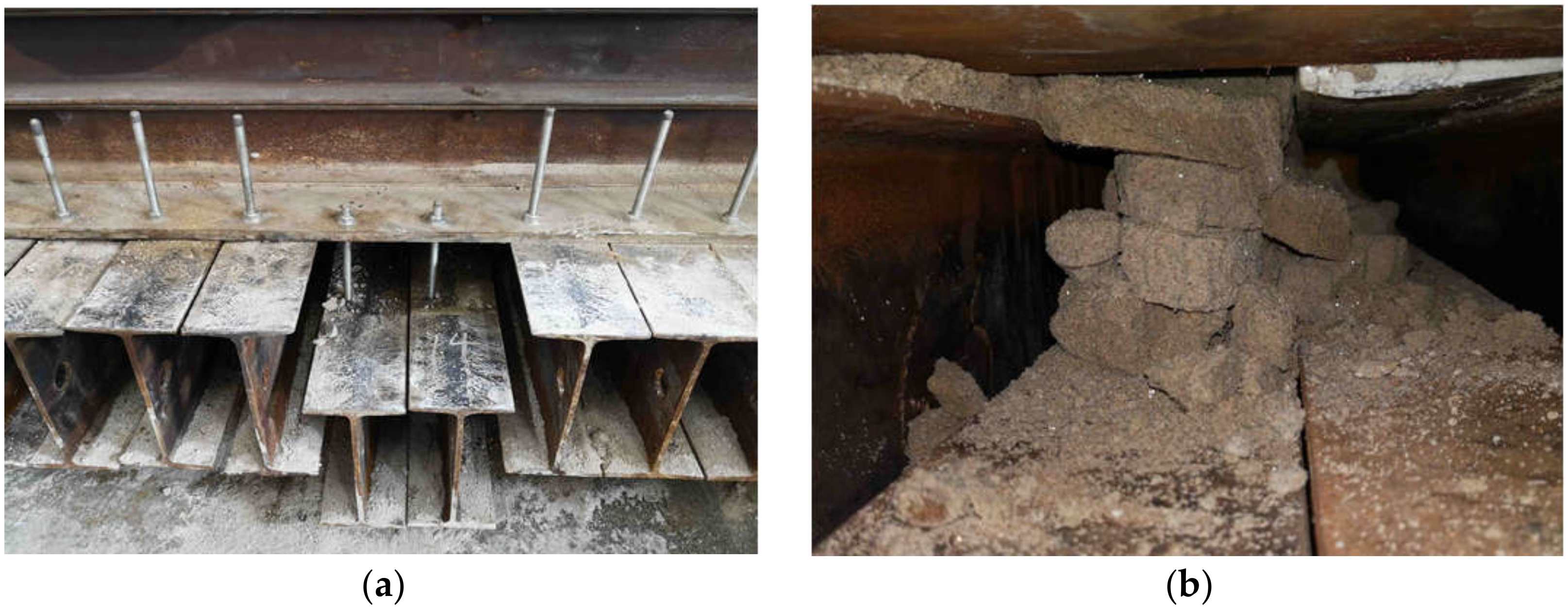
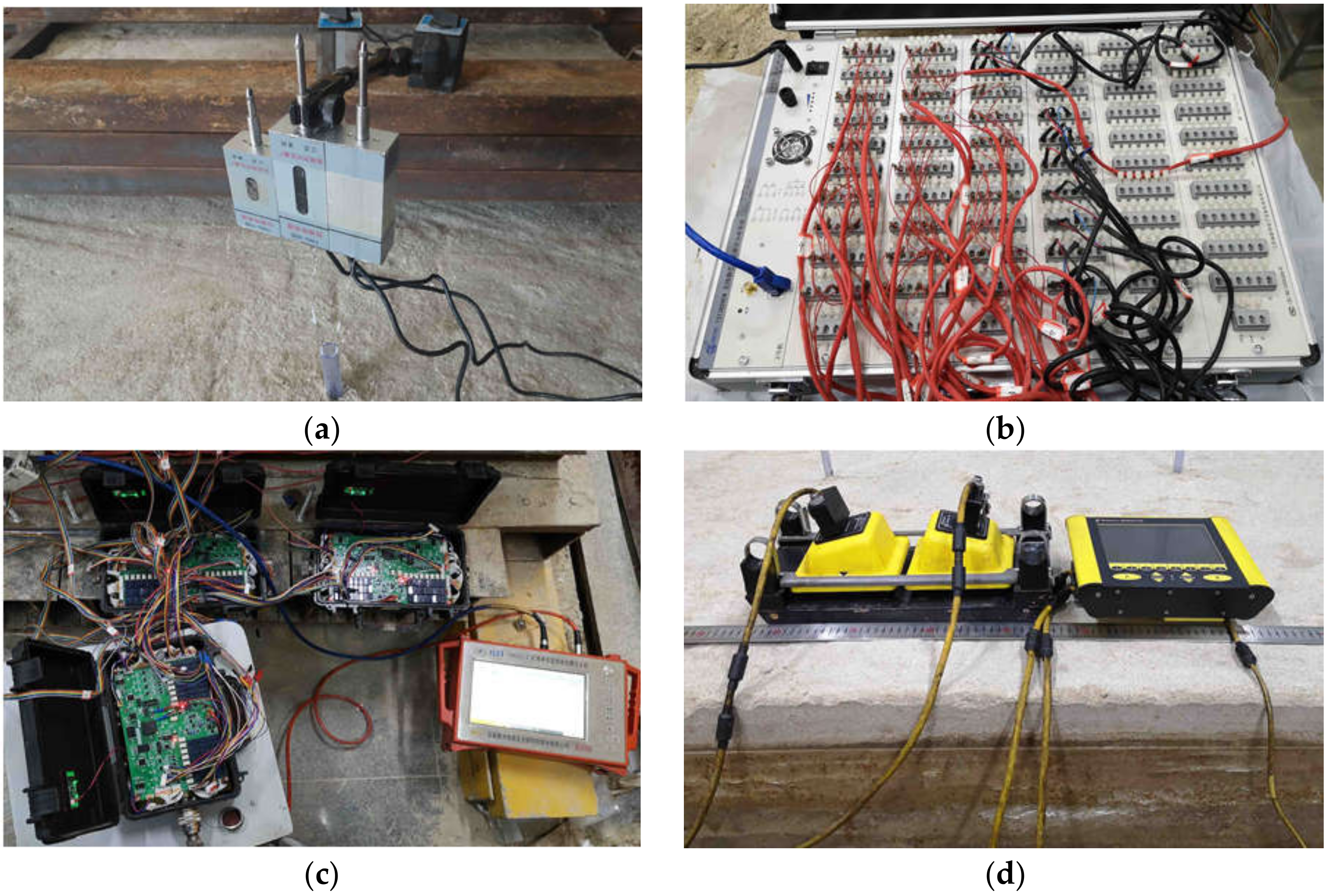
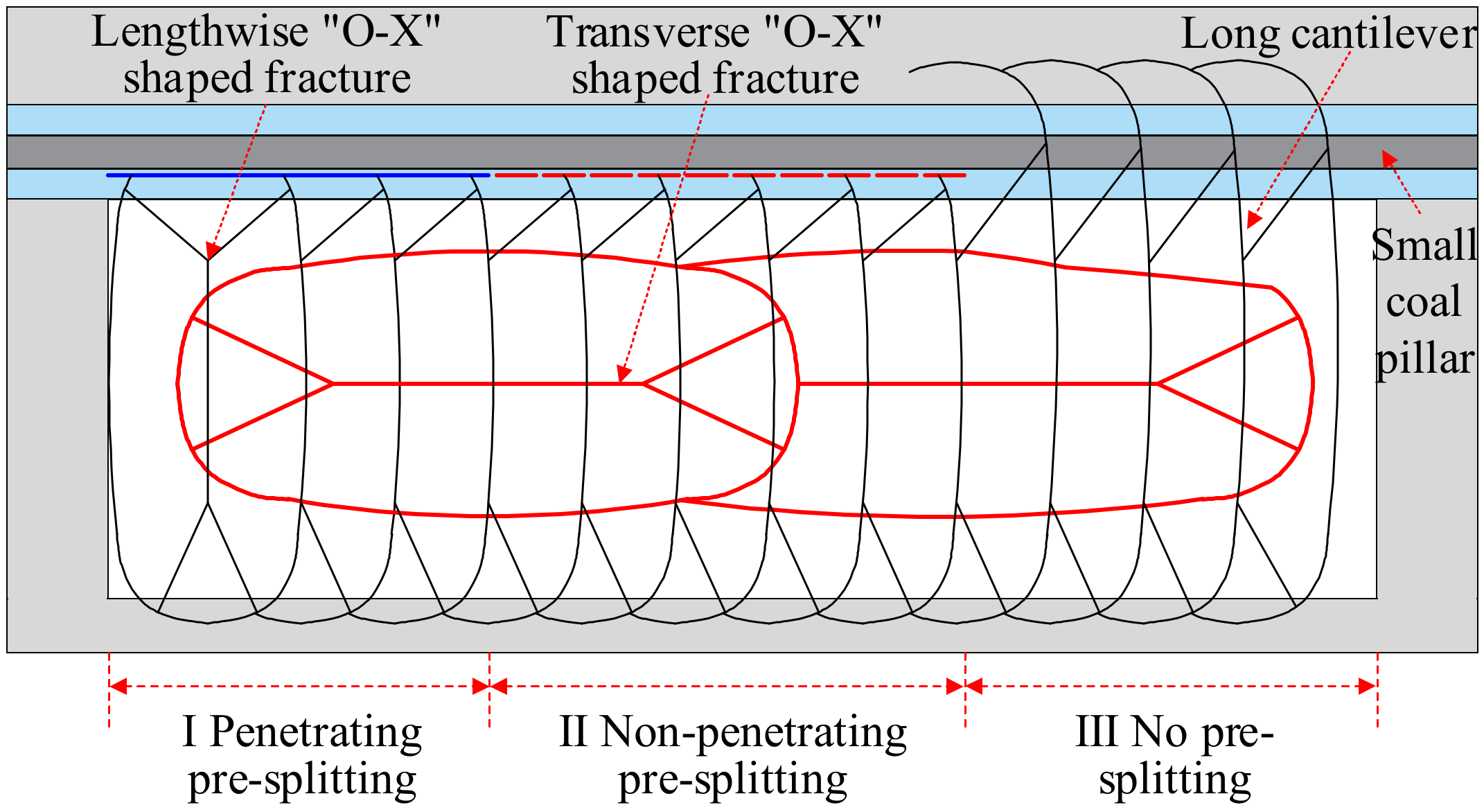
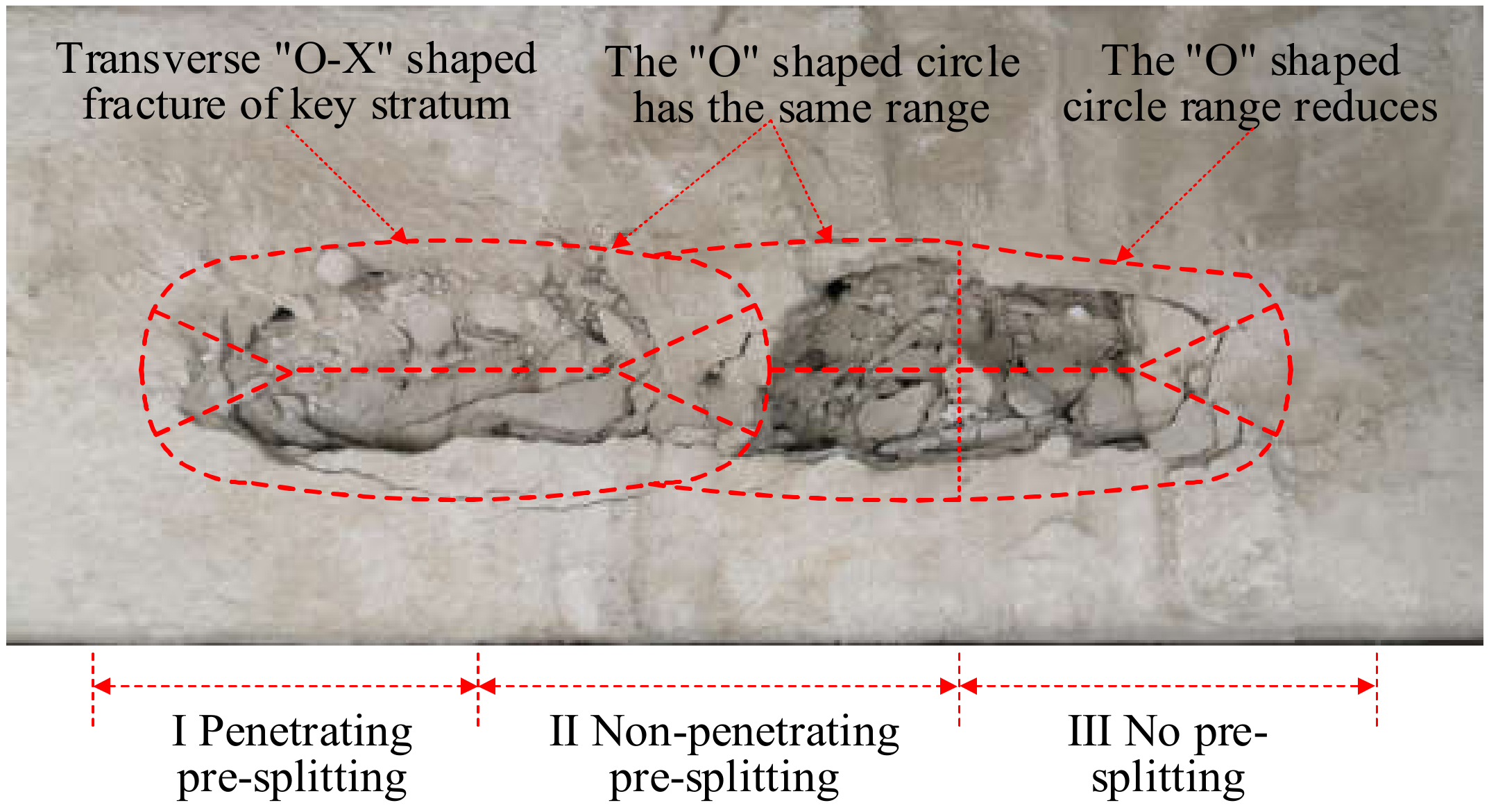
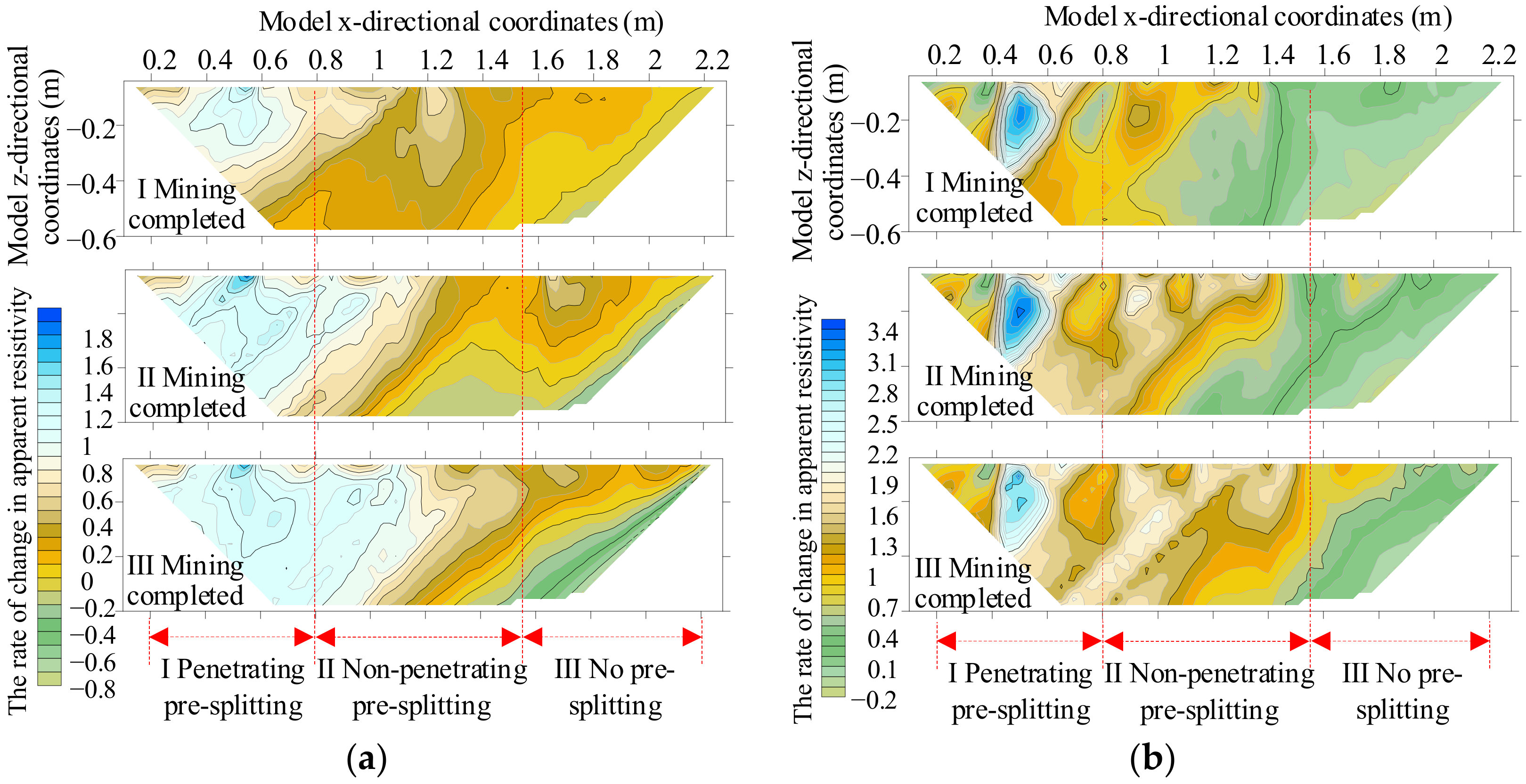
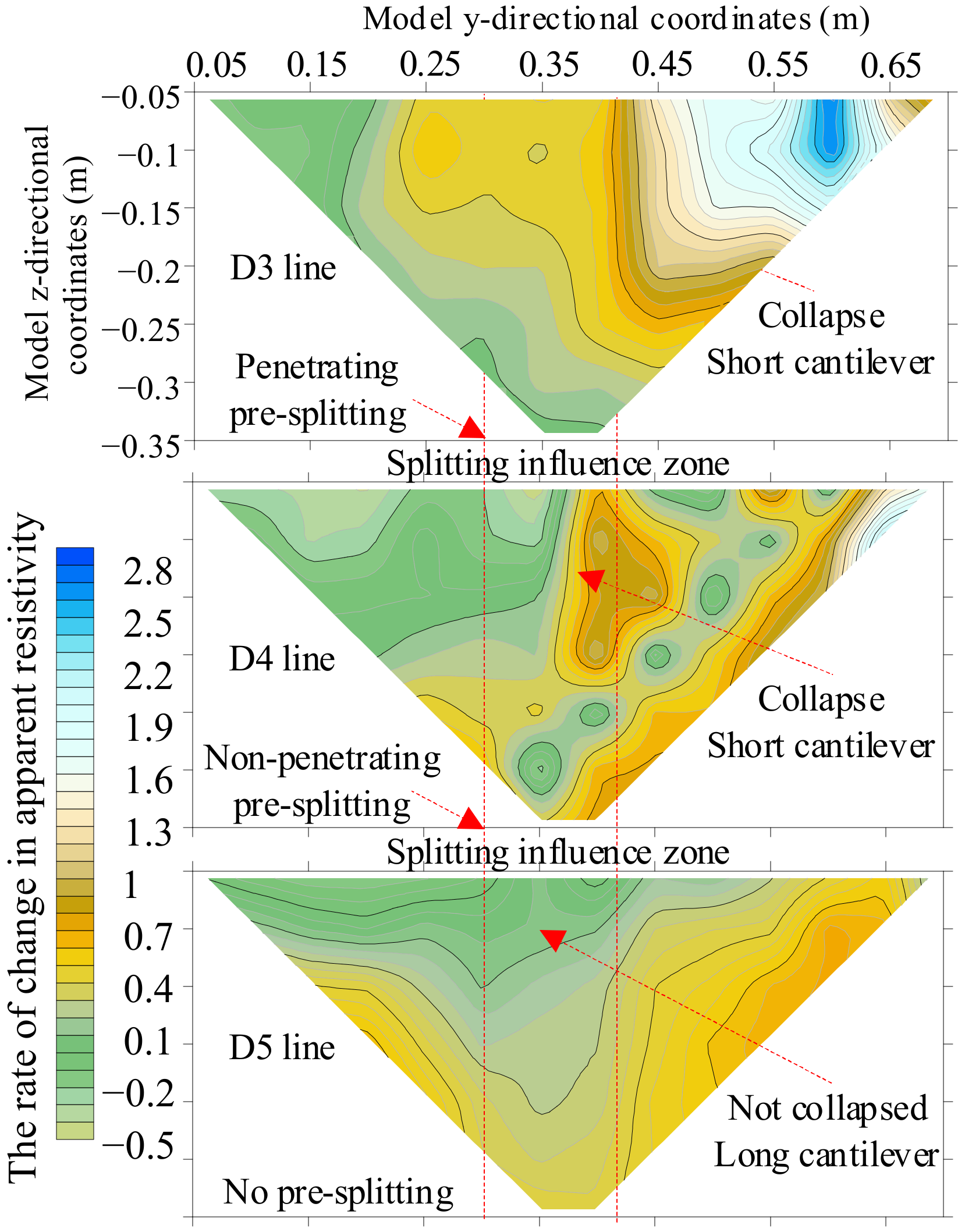


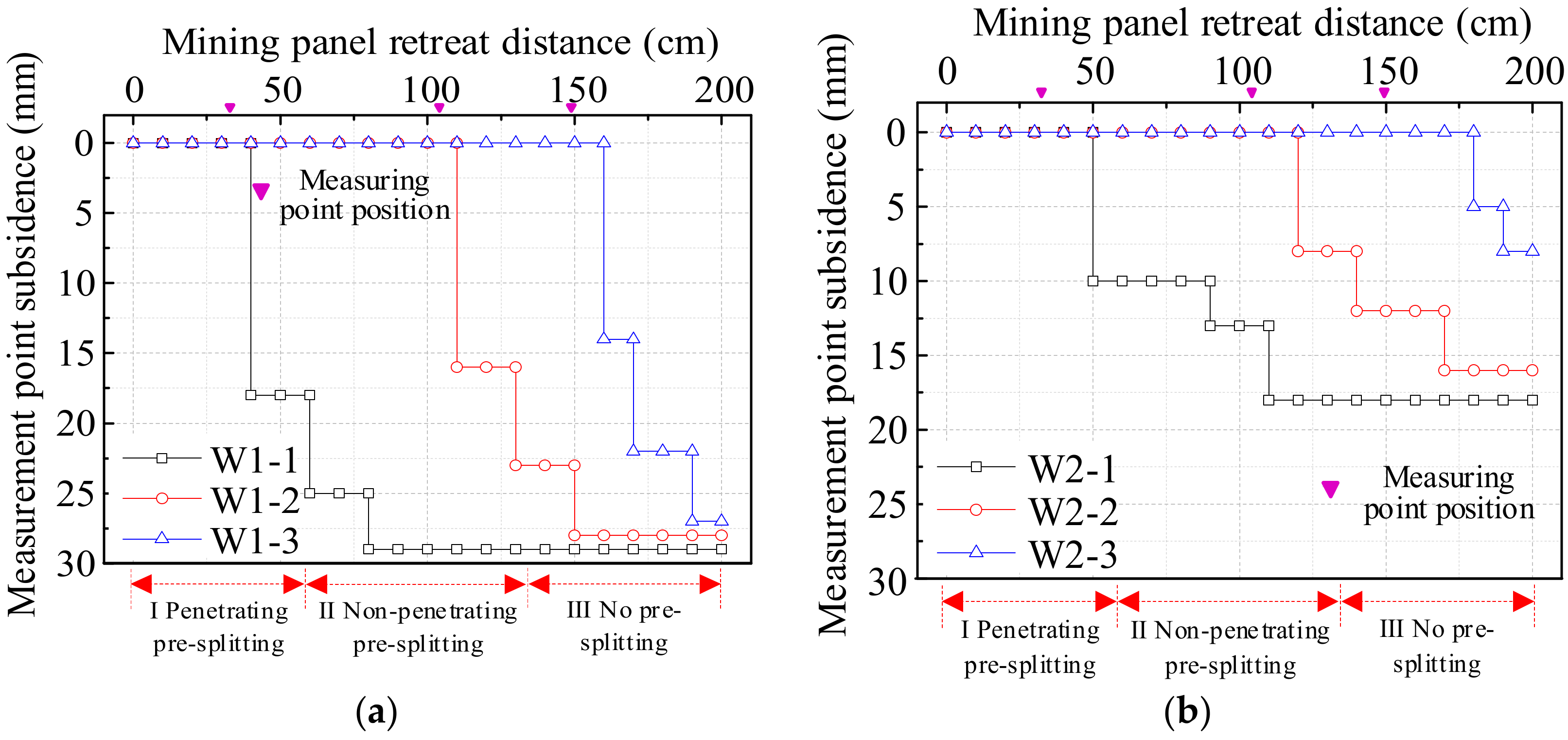

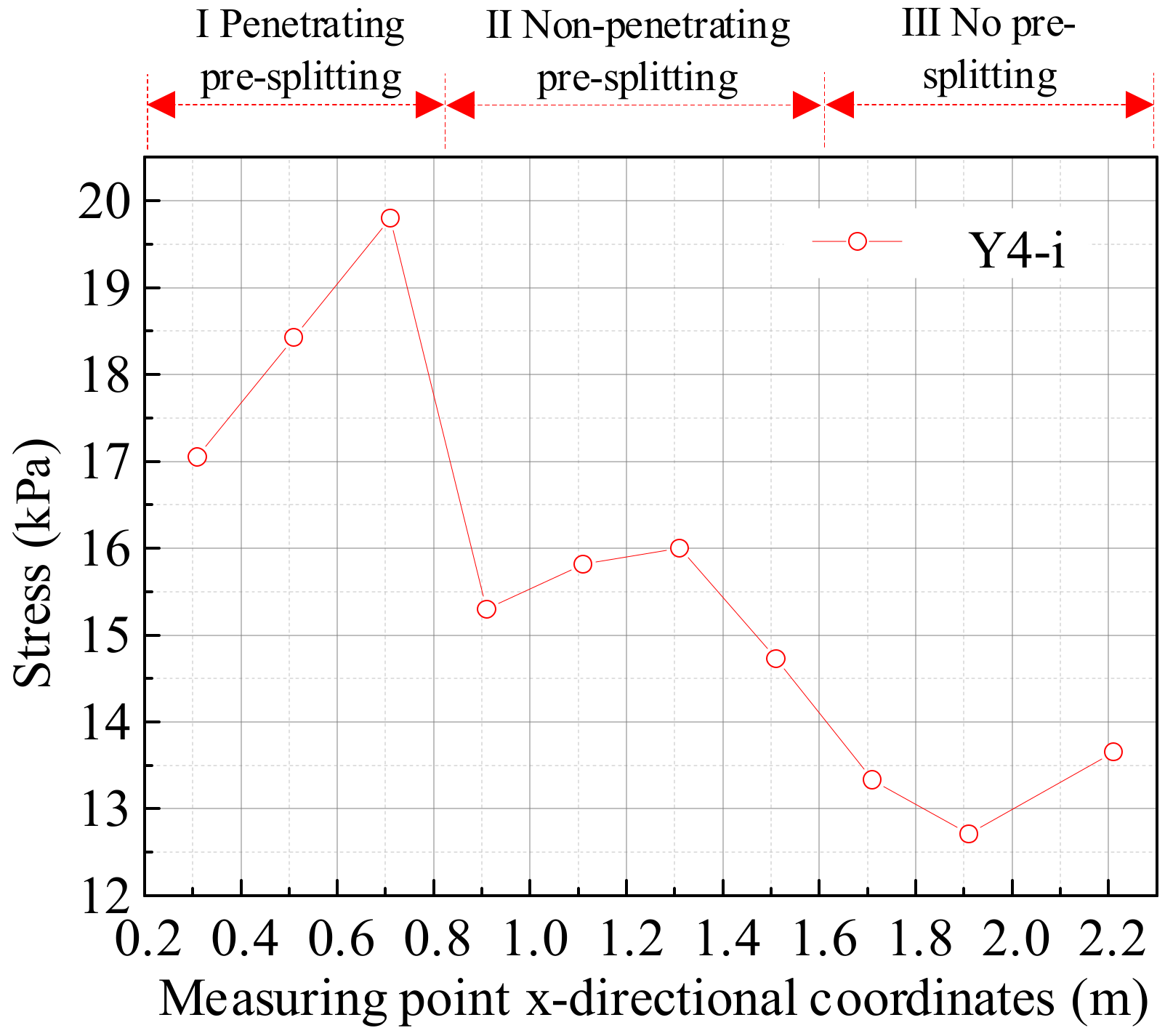
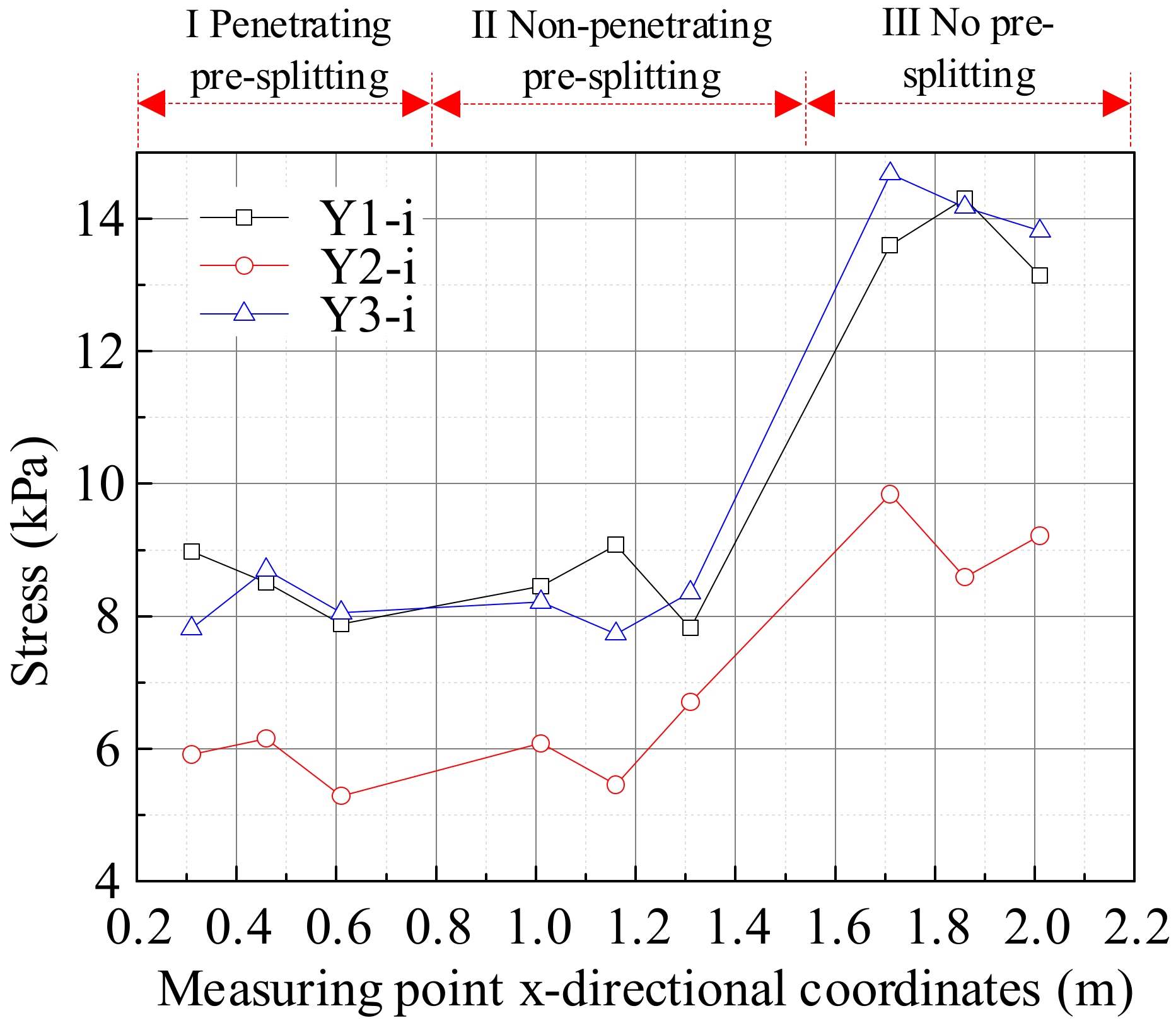
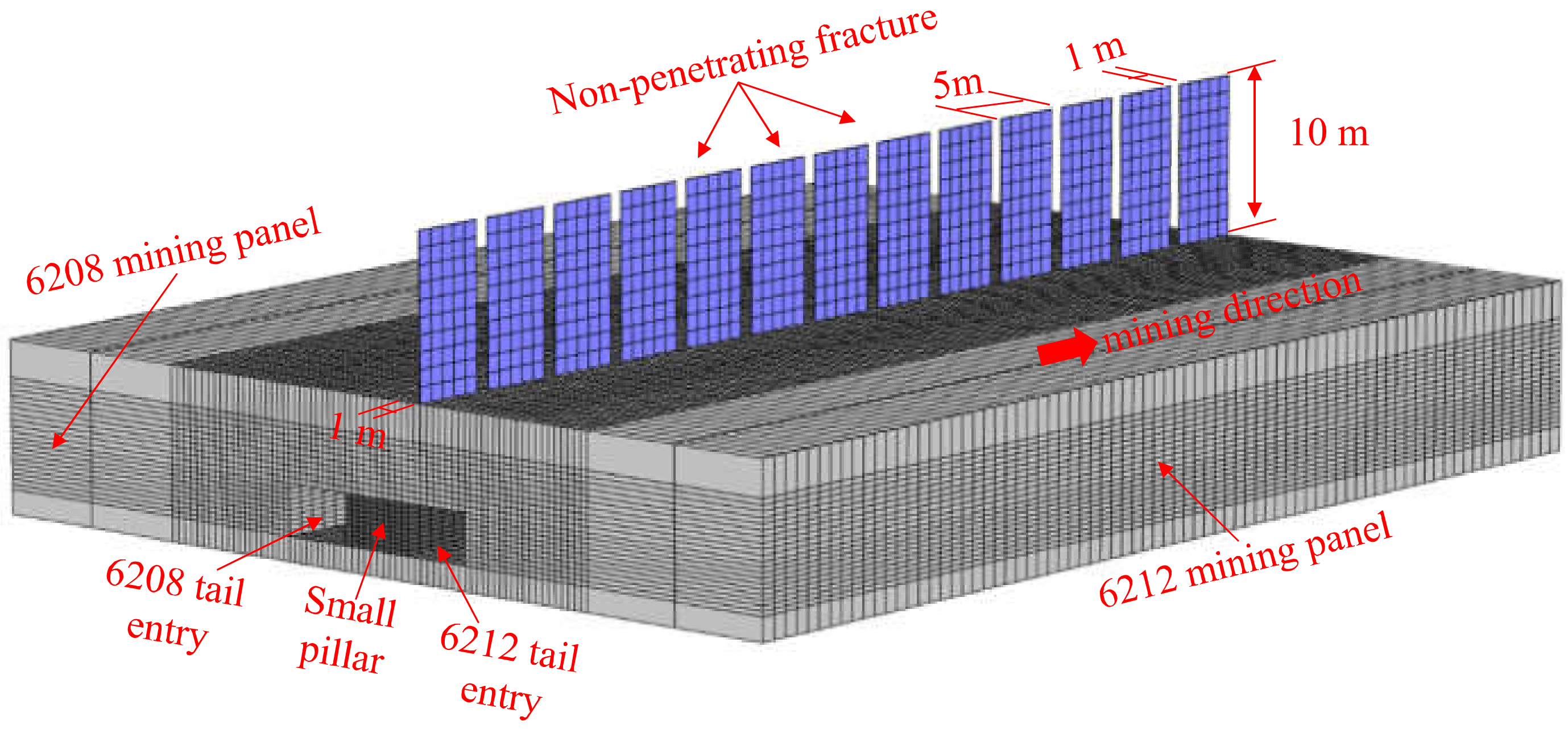
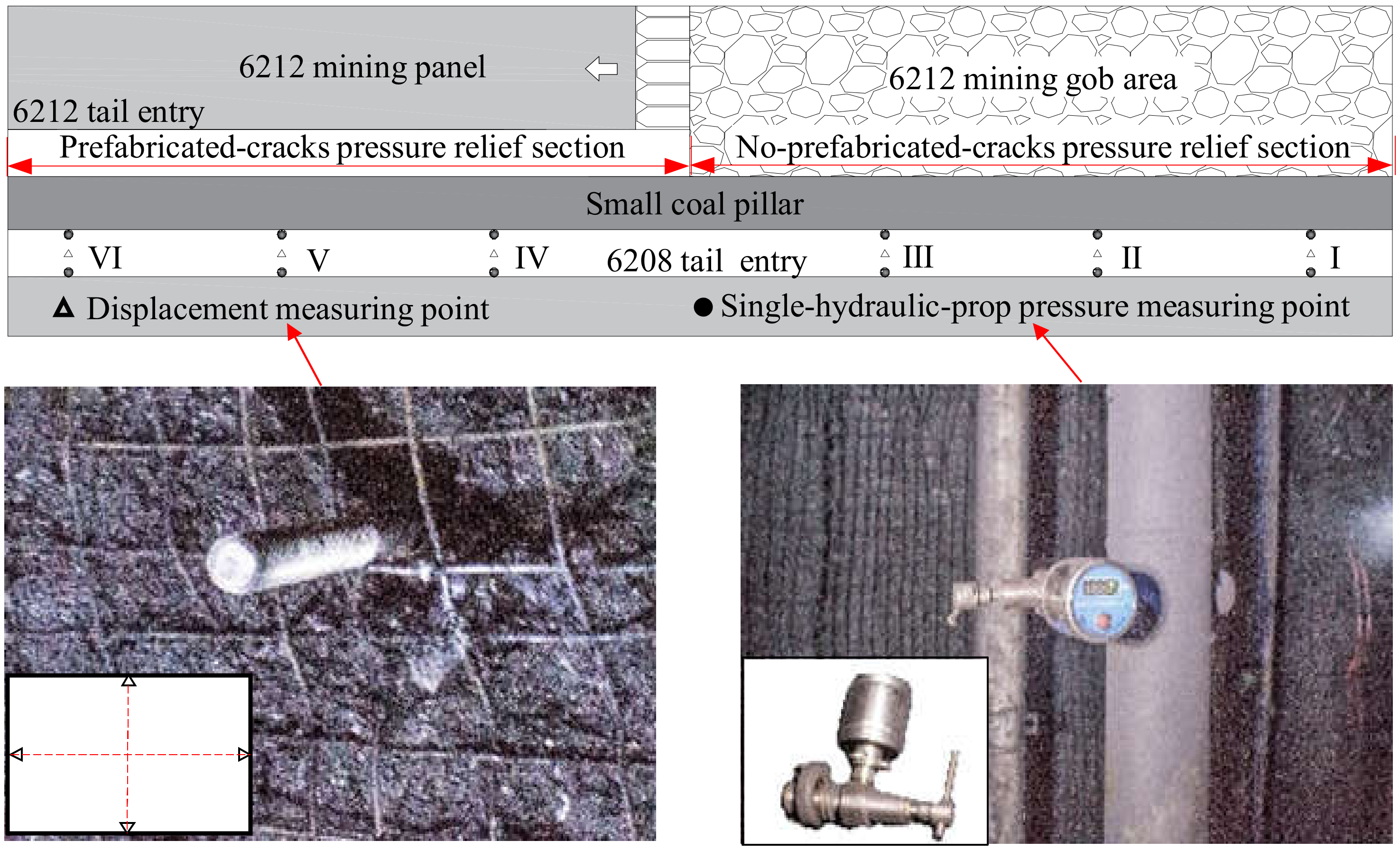


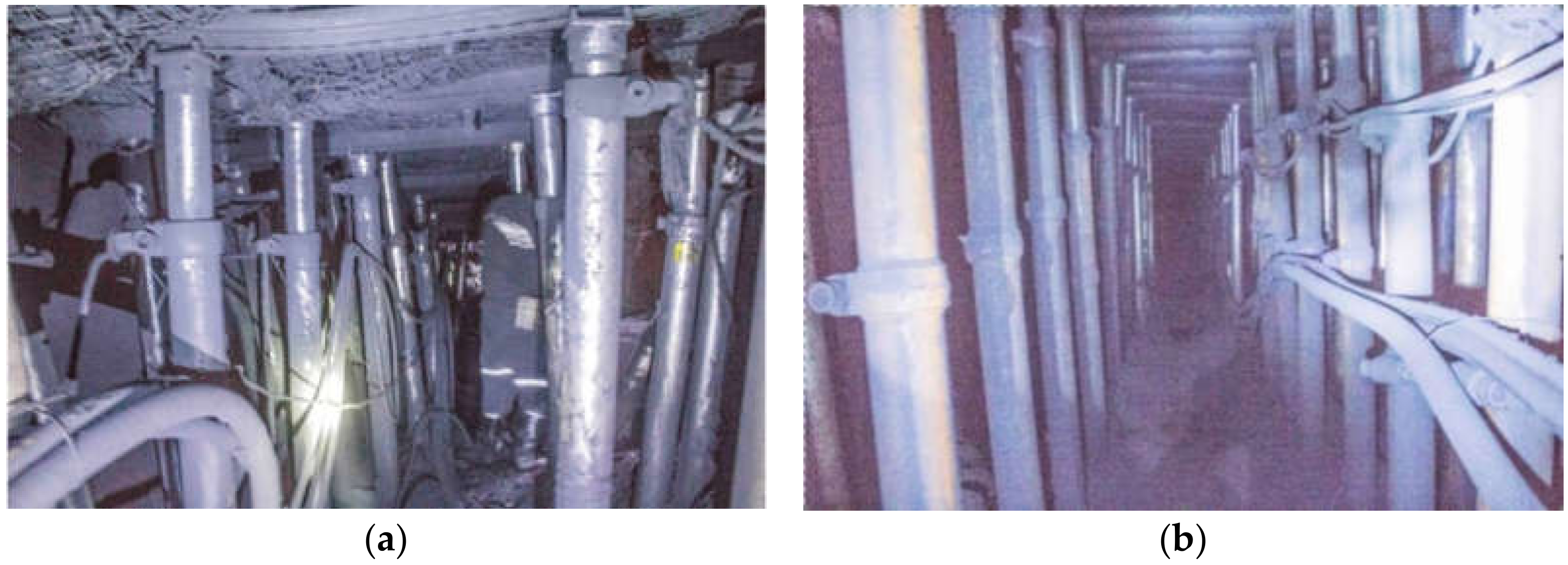
| Lithology Name | Prototype/m | Model (cm) | Layer Number | Compressive Strength (MPa) | Proportion | |||
|---|---|---|---|---|---|---|---|---|
| Layer Thickness | Gross Thickness | Layer Thickness | Gross Thickness | Prototype | Model | Sand/Lime/Gypsum | ||
| Medium sandstone | 0.45 | 48.00 | 0.56 | 60.00 | 1 | 58.62 | 0.44 | 546 |
| Sandy mudstone | 8.00 | 47.55 | 10.00 | 59.44 | 3 | 37.50 | 0.28 | 646 |
| Mudstone | 5.30 | 39.55 | 6.63 | 49.44 | 2 | 32.40 | 0.24 | 655 |
| Sandy mudstone | 6.00 | 34.25 | 7.50 | 42.81 | 2 | 37.50 | 0.28 | 646 |
| Mudstone | 3.25 | 28.25 | 4.06 | 35.31 | 1 | 32.40 | 0.24 | 655 |
| Fine sandstone | 2.60 | 25.00 | 3.25 | 31.25 | 1 | 61.04 | 0.46 | 537 |
| Mudstone | 2.80 | 22.40 | 3.50 | 28.00 | 1 | 32.40 | 0.24 | 655 |
| Fine sandstone | 10.35 | 19.60 | 12.94 | 24.50 | 4 | 98.31 | 0.82 | 528 |
| Sandy mudstone | 2.35 | 9.25 | 2.94 | 11.56 | 1 | 37.01 | 0.28 | 646 |
| Coal | 6.90 | 6.90 | 8.63 | 8.63 | 1 | 9.18 | 0.08 | 773 |
Disclaimer/Publisher’s Note: The statements, opinions and data contained in all publications are solely those of the individual author(s) and contributor(s) and not of MDPI and/or the editor(s). MDPI and/or the editor(s) disclaim responsibility for any injury to people or property resulting from any ideas, methods, instructions or products referred to in the content. |
© 2024 by the authors. Licensee MDPI, Basel, Switzerland. This article is an open access article distributed under the terms and conditions of the Creative Commons Attribution (CC BY) license (https://creativecommons.org/licenses/by/4.0/).
Share and Cite
Cheng, S.; Ma, Z.; He, W.; Zhang, X.; Li, S.; Yang, C.; Liang, P. Three-Dimensional Physical Test Study on the Overburden Breaking Behavior of Non-Penetrating Pre-Splitting in Small-Coal-Pillar Roadway Roofs. Processes 2024, 12, 1491. https://doi.org/10.3390/pr12071491
Cheng S, Ma Z, He W, Zhang X, Li S, Yang C, Liang P. Three-Dimensional Physical Test Study on the Overburden Breaking Behavior of Non-Penetrating Pre-Splitting in Small-Coal-Pillar Roadway Roofs. Processes. 2024; 12(7):1491. https://doi.org/10.3390/pr12071491
Chicago/Turabian StyleCheng, Shixing, Zhanguo Ma, Wenhui He, Xiao Zhang, Shiye Li, Chao Yang, and Pengfei Liang. 2024. "Three-Dimensional Physical Test Study on the Overburden Breaking Behavior of Non-Penetrating Pre-Splitting in Small-Coal-Pillar Roadway Roofs" Processes 12, no. 7: 1491. https://doi.org/10.3390/pr12071491





